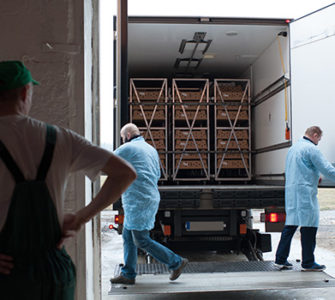Educating growers improves broiler biosecurity
An outreach program in the poultry-intense Delmarva region of the US is helping growers improve biosecurity and protect broiler flocks from potentially devastating disease.
The program was initiated primarily to help prevent avian influenza, but Moyle pointed out that good biosecurity practices can help stave off a wide range of poultry diseases.
So far, there have been six, 2-hour workshops attended by over 500 participants who were primarily growers, along with some allied industry personnel and government workers. The size of flocks managed by participating growers ranged from less than 30,000 to more than 180,000, he said.
Biosecurity ‘absolutes’
Moyle, of the university’s Lower Eastern Shore Research and Education Center, Salisbury, said five biosecurity “absolutes” are emphasized in the workshops:
- Poultry-farm growers must have no contact with backyard poultry.
- Unauthorized visitors must be prohibited.
- Farms should have dedicated footwear and clothes.
- Visitors permitted on the farm must wear protective clothing.
- The farm must have best management practices in place for dead bird disposal.
“Without these [practices], you have no biosecurity plan,” he said.
The program strongly recommends the use of visitor logs, that signs about biosecurity be placed around the farm and that access on the farm be limited with locking doors, farm gates and designated access doors. Each poultry house should have footbaths as well as footwear dedicated to that house for anyone entering, and anyone entering a house should be required to wash hands.
Washing equipment coming onto the farm is another routine practice encouraged in the workshop as well as control of beetles and rodents. Growers are further advised to protect flocks from contact with wild birds, which requires end-door management and cleaning up feed spills.
Improvements noted
The outreach program appears to be paying off, Moyle said. When survey information obtained from June 2015 workshop participants was compared to follow-up responses gathered in October 2015, about 90% said changes had been made to biosecurity procedures. Most who had not made changes said it was because they already had a good plan in place.
The use of dedicated footwear increased from fewer than 90% to nearly 100%; the use of dedicated clothing increased from less than 70% to over 90%, and improved management of dead birds via composting increased from less than 80% to over 90%.
One of the more difficult changes to implement has been getting growers to wash equipment entering their farms; the percentage that were washing equipment before the workshop isn’t known, but fewer than 40% were doing so as of October 2015, Moyle said.
Industry help
He noted that the poultry industry is doing its part. Companies are holding grower meetings to talk about biosecurity, and service personnel are working with growers to help them implement good biosecurity and, in some cases, are providing clothing and disinfectants.
“Continue to have conversations with growers to explain the importance of biosecurity,” and “help them find the problems in their plans,” Moyle told the audience.
“We’re all in this together,” he commented after the meeting. By working together, commercial poultry companies can have effective biosecurity programs in place that can protect their flocks.
“I think we’re doing a good job with our commercial growers,” but a lingering concern is disease in backyard flocks, which can ultimately affect commercial birds, Moyle said.
Posted on January 14, 2016

















